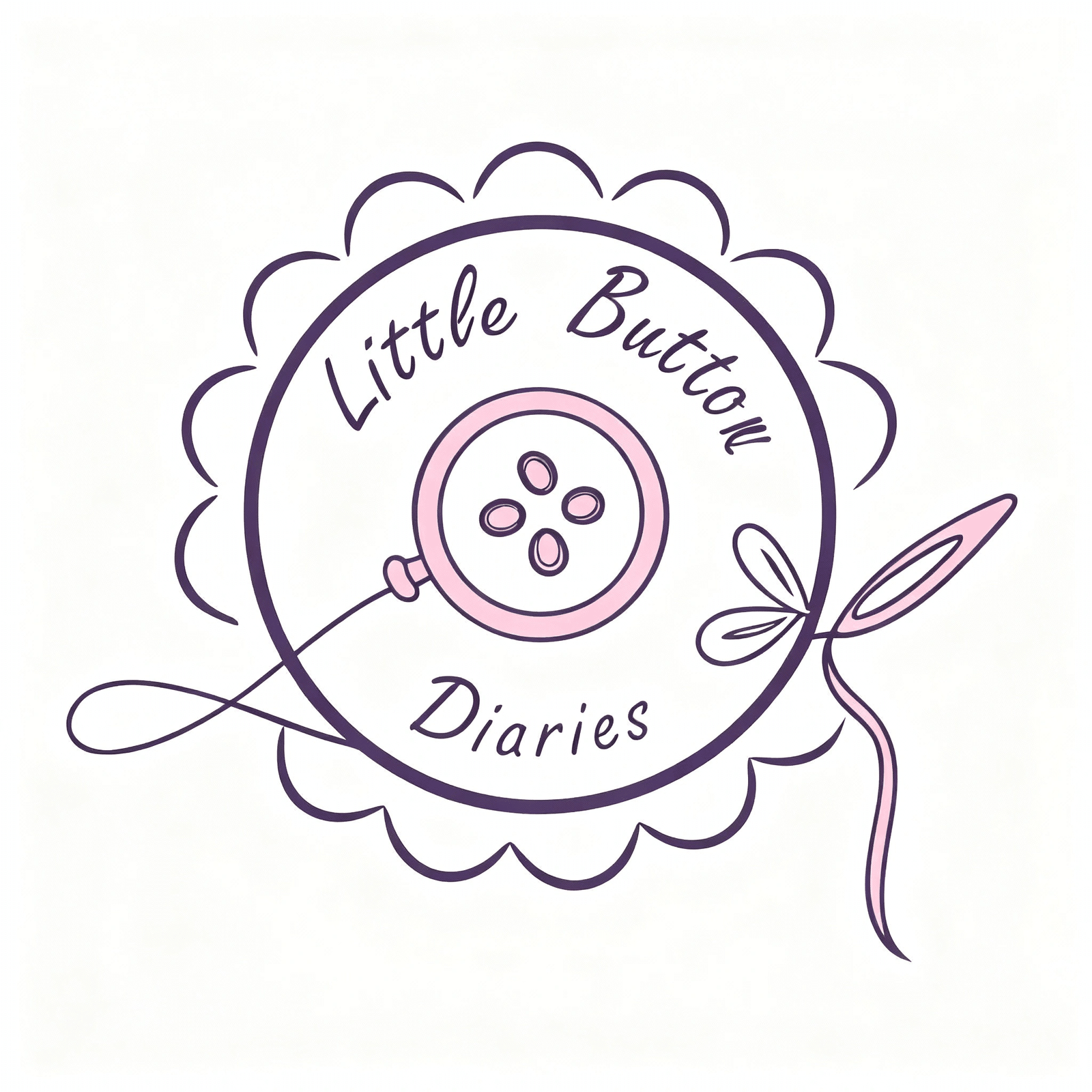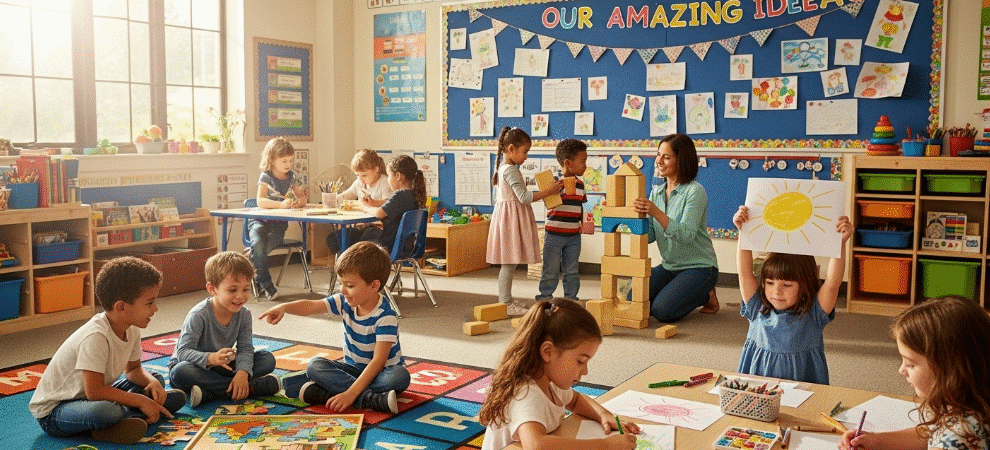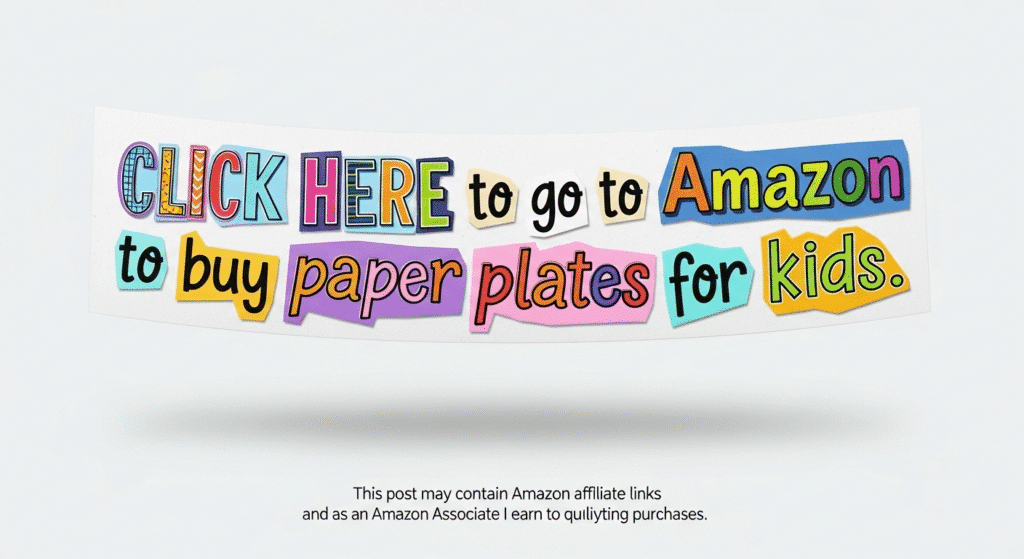Starting kindergarten is a big step for any child, and having the right kindergarten class ideas can make all the difference. At the beginning of the kindergarten year, it’s important to focus on routines and foundational skills to help children build a strong base for future progress. Setting up a classroom that feels welcoming and supports learning helps kids settle in and get excited about school. When you create a space where young learners can explore and grow, you’re setting them up for a great school year.
Introduction to Kindergarten Classroom
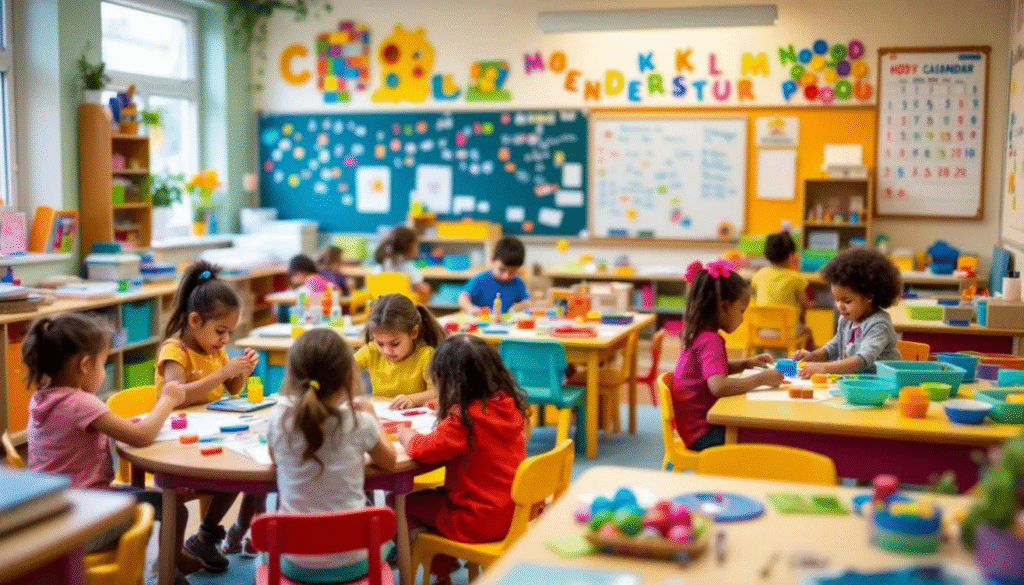
The kindergarten classroom is a right cracking place where little ones kick off their brilliant journey into proper school. As the kids pile into the classroom, they’re met with loads of dead engaging activities that get their curiosity going and make learning a proper laugh. From day one, all the teaching ideas are built around hands-on stuff that helps the youngsters get sorted with important bits like fine motor skills, number sense, and working out where things go. Whether the kids are having a go with a sensory bin, mucking about with paper towels and glue, or getting stuck into some dramatic play, every single activity is set up to help them grow and get their creative juices flowing.
In this buzzing environment, students learn to crack on by themselves and in little groups, building up their confidence as they sort out problems and discover brilliant new ideas together. Teachers get the children to have a go at drawing pictures, sharing stories, and getting their thoughts out through art, which helps them get sorted with both reading and chatting skills. The classroom is chock-full of chances for play and having a proper explore, from nature walks that get students connected to the world outside, to maths and science lessons that get them buzzing about how things actually work. Nature walks can be a fun activity for kindergarten students that promotes exploration and observation skills, making learning an adventure.
Family members are dead important when it comes to helping students get used to the school routine and making mates with their classmates. Throughout the school year, the kindergarten classroom keeps up with the changing seasons, with lessons and activities that show whats happening in the world around us. Social-emotional learning gets woven into the daily routine, teaching the little ones how to share nicely, work together, and get their feelings out in a calm and supportive way.
As the year gets going, students become more independent, confident, and proper keen to learn. The kindergarten classroom is a place where creativity, imagination, and a love of learning get celebrated every single day. For more brilliant ideas on creating a classroom thats both engaging and does the job properly, have a chat with experienced teachers or have a look at extra resources to help your students really thrive.
Setting Up Your Kindergarten Classroom
A good classroom setup is about more than just furniture. It’s about creating a space where kids feel safe and ready to learn. Think about areas where students can gather for group work, quiet spots for rest or reading, and places to store their things. Organize materials so kids can easily find and use them independently. Use clear labels and simple signs to help children identify different areas and supplies. Consider using dry erase markers to write on laminated labels or boards, making it easy to update information as needed.
Make sure to include a cozy reading corner with comfy seating and lots of books. A well-stocked library area encourages kids to fall in love with reading early on. Also, having a space for dramatic play invites creativity and social interaction. Creative kindergarten activities include sensory activities, art projects, music and movement, and nature exploration, all of which support holistic development. Setting up a sensory bin area with various textures and objects can support fine motor skills and keep kids calm when they need a break.
Kindergarten Activities That Work
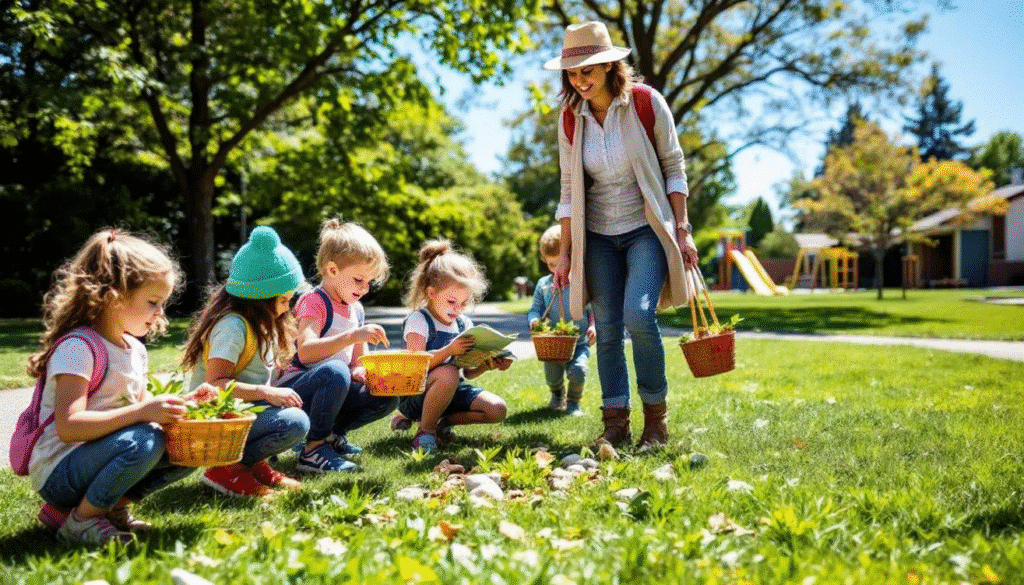
Keeping kids engaged means mixing up activities that spark curiosity and build skills. Here are some ideas that work well in a kindergarten classroom. Teachers can also find free printable plans or templates online to supplement their classroom activities.
Nature Walks and Outdoor Learning
Take your class outside for a nature walk. Kids can collect leaves, rocks, or flowers and then draw pictures of their finds back in the classroom. Nature scavenger hunts combine math and literacy activities with outdoor exploration, making learning both dynamic and engaging. Afterward, have students identify and map important places in their school or neighborhood to build spatial awareness. This hands-on activity helps with observation skills and connects them to the world around them. Use the changing seasons as a chance to talk about weather, animals, and plants.
Hands-On Math and Literacy
Use playdough to form letters and numbers, which helps kids develop fine motor skills and recognize shapes. Counting games with everyday objects like coins or blocks build number sense and spatial awareness. Writing simple sight words on dry erase boards lets kids practice without the pressure of paper and pencils. Encourage students to write simple stories or journal entries using the sight words they’ve learned.
Dramatic Play
Set up a pretend store, kitchen, or doctor’s office. Dramatic play encourages kids to use their imagination, practice social skills, and build vocabulary. It’s also a great way for shy kids to open up and make friends. Invite family members or older students to join in sometimes for extra fun and learning. Dramatic play scenarios can also help new students learn classroom routines and feel welcome as they get to know their classmates.
Sensory Bins and Creative Art
Fill sensory bins with rice, beans, or sand and add small toys or tools. Kids can explore textures and practice sorting or counting. Art activities like drawing, painting, or crafting give kids a way to express emotions and develop creativity. Drawing and painting encourage free expression and help develop pre-writing skills, laying the groundwork for future literacy. Use simple prompts like “draw your family” or “paint your favorite animal” to guide them. Students can also add a picture to their story or label their picture to enhance their storytelling and learning.
Teaching Ideas That Make a Difference
Teaching kindergarten means balancing group lessons with chances for kids to work on their own. Using helpful strategies and resources can make it easier to manage both group activities and independent work. Here are some ideas to keep learning moving forward:
Small Group Instruction
Take time to prepare materials and activities in advance for small group instruction. This preparation helps ensure smooth transitions and maximizes effective learning.
Break students into small groups based on what they need to work on, like letter sounds or counting. Keep sessions short—about 10 to 15 minutes—to match their attention spans. Rotate groups so everyone gets focused support without feeling stuck in one place. Playing with patterns helps build foundations for future math skills in kindergarten, making it a valuable addition to small group activities.
Clear Rules and Routines
Start the school year by teaching simple rules and routines. Use songs, charts, or games to make them easy to remember. For example, have a clean-up song to signal it’s time to put away toys or a hand-washing routine before snack time. Consistency helps kids feel safe and know what to expect. It’s also important to align your classroom routines with the rules and procedures set by schools to ensure a smooth and coordinated start.
Encouraging Independence
Teach kids to take care of their belongings, like hanging up coats and putting away backpacks. Show them how to get materials and clean up after activities. This builds confidence and helps the classroom run smoothly.
Be sure to review routines and expectations with students joining the class, whether at the start of the year or mid-year, to help them integrate smoothly.
Managing the Classroom Flow
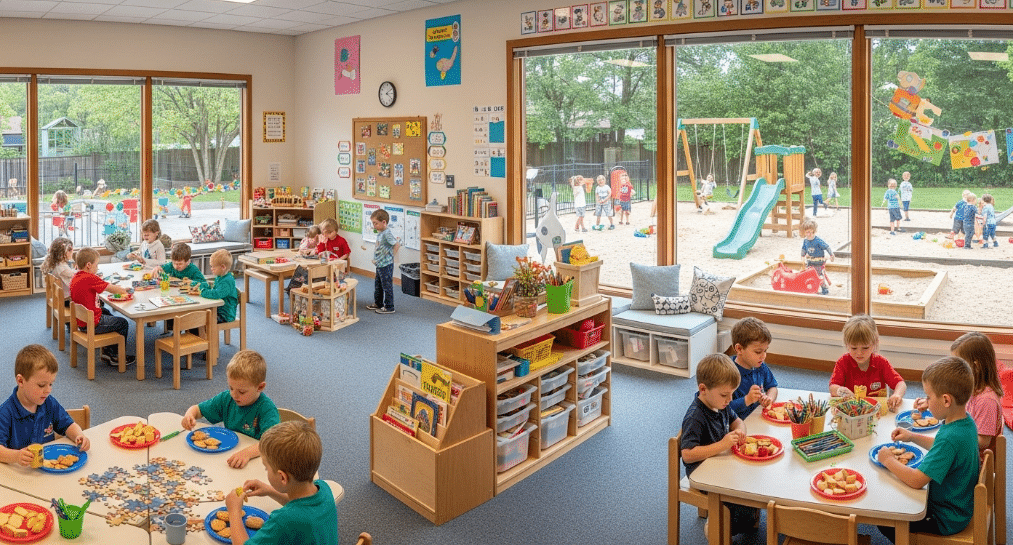
Keeping a kindergarten class running well means planning for transitions and breaks. Here’s how to keep things calm and organized. Establishing effective classroom management and routines not only supports daily learning but also prepares students for future academic success.
Soft Starts and Learning Centers
Begin the day with soft starts—quiet activities like puzzles, books, read, or drawing. This helps kids settle in and get ready to learn. Set up learning centers around the room where kids can explore different skills at their own pace. Rotate centers throughout the week to keep things fresh.
Snack and Rest Time
Snack time is a great chance to practice routines like washing hands with soap and drying with paper towels. Keep snacks simple and encourage kids to eat at their own pace. After snack, a short rest or quiet time helps kids recharge. Use soft music or dim lighting to create a calm environment.
Outdoor Play
Give kids plenty of time to run, jump, and play outside. Physical activity supports health and helps them focus better during class. Teach outdoor rules clearly and remind kids about safety, like staying within boundaries and sharing equipment.
For a fun seasonal twist, try summer-themed outdoor activities, such as counting beach balls or collecting and counting shells, to connect learning with the summer season.
Building Social Skills and Emotional Awareness
Kindergarten is a key time for kids to learn about emotions and how to get along with others. Effective social-emotional strategies, such as sharing, taking turns, and expressing feelings, have been taught in kindergarten classrooms to help children build these important skills. Here’s how to support that:
Emotion Talks and Collages
Use simple language to talk about feelings like happy, sad, or angry. Have students draw pictures or create collages showing different emotions. Encourage student participation by having them share what makes them feel that way and how they can respond.
Role-Playing and Empathy
In dramatic play or group discussions, introduce scenarios where kids practice kindness, sharing, and solving problems. Role-playing helps them understand others’ feelings and builds empathy.
Gratitude and Positive Actions
Encourage kids to notice good things and say thank you. Simple activities like sharing a “thank you” story or giving a virtual high five can build a positive classroom vibe.
Getting Parents Involved
Parents are an important part of the kindergarten experience. Keep them connected with the classroom through:
- Regular updates about what kids are learning and doing.
- Invitations to volunteer or join special events.
- Sharing tips for supporting learning at home, like reading together, practicing writing, or encouraging the parent to help their child define new words and develop important skills.
Having a clear plan for communication helps parents feel involved and supports the child’s success.
Wrapping Up the Week and Planning Ahead
At the end of each week, take time to review what worked well and what could be better. Reflect with your students on what they enjoyed and what they learned. Use this to plan the next week’s activities and lessons.
Keep a file or notebook with notes, lesson ideas, and observations about each child’s progress. This helps you stay organized and ready to support every learner.
Final Thoughts
Kindergarten is an exciting time full of new experiences for kids. With the right classroom setup, fun activities, and clear routines, you can create a space where children feel safe, happy, and ready to learn. Remember to keep things simple, flexible, and focused on what your students need. When you do that, you’ll see them grow in amazing ways all school year long.
